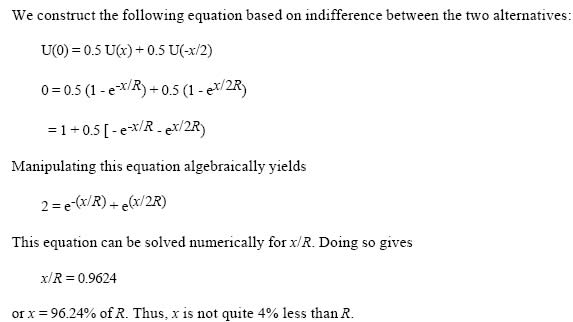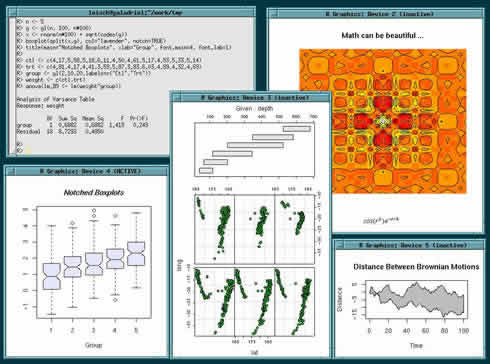« March 2006 | Main | May 2006 »
April 25, 2006
Risk tolerance
ASSESSING RISK TOLERANCE WITH A SIMPLE GAMBLE

Want to estimate risk tolerance with just one question? Thanks to Bob Clemen who has written a nice piece about it in the Decision Analysis Newsletter, and to the SJDM mailing list, here's the one question:
"Suppose you face a gamble where you can win $x with probability 0.5 or lose $x/2 with probability 0.5. What is the largest x for which you would be just willing to take this gamble? I’m looking for the largest x that makes you just indifferent between taking the gamble or not."
In Clemen's book Making Hard Decisions, in the solutions manual, he gives a derivation of how to get from the respose to that question into an estimate of the risk tolerance parameter R in the exponential utility function U(x) = 1-exp(-x/R).

Another way to estimate risk tolerance is using the Distribution Builder
Posted by dggoldst at 01:08 PM | Comments (0)
April 14, 2006
Why doesn't economics cite other fields?
WHO TALKS TO WHOM: INTRA- AND INTERDISCIPLINARY COMMUNICATION OF ECONOMICS JOURNALS


A talk by Jeffrey Pfeffer currently touring the world cites some stats from Who Talks to Whom? Intra- and Interdisciplinary Communication of Economics Journals, a 2002 paper by Rik Pieters and Hans Baumgartner:
" * 90% of citations in economics is intradisciplinary
* The 5 economics journals studied made no citations to management, marketing, anthropology, or psychology journals
* Economics is cited 4333 times by its sister disciplines between 1995 & 1997, while economics cites other disciplines (mostly finance at 79%) 601 times"
ABSTRACT of Pieters and Baumgartner:
Citation patterns between 42 journals in economics from 1995 to 1997 are examined, plus between economics and anthropology, political science, psychology, sociology and five business disciplines. Building on social network theory, we identify a hierarchical organization of journals in economics and seven journal clusters. Major citation flows are found from all areas of economics to the general interest and theory and method clusters, but not the other way around. Economics emerges as a significant source of interdisciplinary knowledge for the other social sciences and business. However, no area of economics appears to build substantially on insights from its sister disciplines.
Also note this recent piece in Foreign Policy by Moisés Naím suggest economics is overly inward gazing given its limited ability to preform its bread and butter task of forecasting the future(a point also made in a forthcoming book by Nassim Taleb).
AUTHORS:
Jeffrey Pfeffer
Rik Pieters
Hans Baumgartner
Posted by dggoldst at 03:42 AM | Comments (0)
April 10, 2006
Learn about R
R STATISTICAL LANGUAGE MULTI-SITE SEARCH

Decision researchers and fellow bloggers Jon Baron and Andrew Gelman are big fans and supporters of the R project for statistical computing.
Searching for information on R can be difficult (though Baron's R search tool is a great help), so DSN has put together a search widget that only queries R sites:
R Statistical Language Multi-Site Search